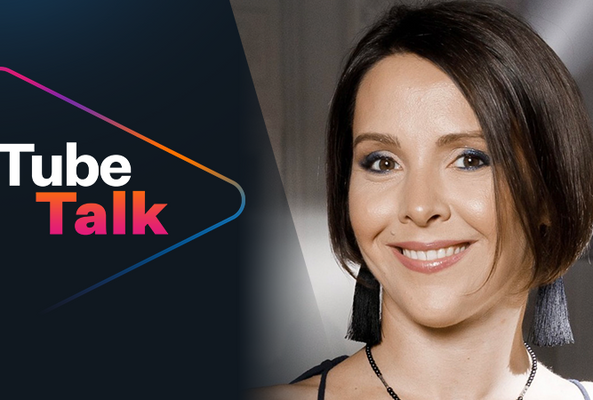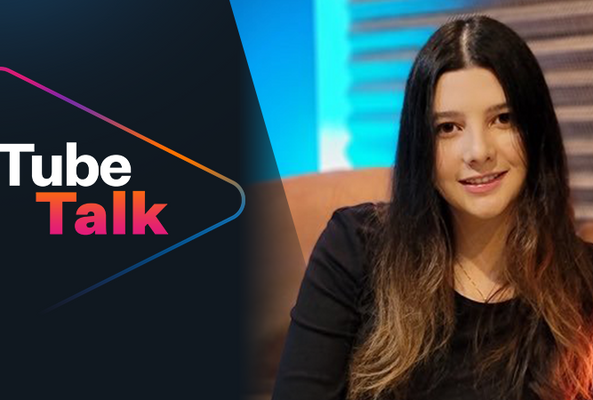Lydia Sweatt is a writer, bookworm, and bass guitar enthusiast. When she goes outside, a bicycle goes with her.
4 Tips to Make Money Outside of YouTube Like Roberto Blake
JUMP TO SECTION:
- 1. Don’t Rely on YouTube AdSense to Fund Your Lifestyle
- 2. Create a Business Plan for Your YouTube Channel
- 3. Supplement YouTube Revenue with Freelance or Gig Work
- 4. Get Serious About Building New Income Streams
Did you know that technically, you’re a creative entrepreneur once you make a full-time income with your craft? YouTube creators can make this happen, especially if they’re monetizing on major platforms, like TikTok and Instagram.
Read More: Want to Make YouTube Your Full-Time Job? Master These 5 Skills
That’s exactly how Roberto Blake does it. He has more than 15 income streams, in which he makes money from his creative talents and intellectual property. He teaches creators on YouTube to do the same thing, and they love his advice. You can tell by the 34 million views and 500,000-plus subscribers on Blake’s channel.
In this episode of TubeTalk, Blake shares some of that money-making wisdom. He talks about all the ways you can monetize content outside of YouTube to create a sustainable career.
Ready to dive in? Here’s your guide – as a digital entrepreneur – for making a full-time income.
1. Don’t Rely on YouTube AdSense to Fund Your Lifestyle
The first revenue stream for most YouTube creators is advertising dollars.
It’s not easy making money through ads, though. Creators must gain 1,000 subscribers, 4,000 hours of Watch Time, and abide by all of YouTube’s rules. If everything goes well, they can apply for the YouTube Partner Program and place ads on their videos.
Read More: YouTube Partner Program - How to Monetize Your Channel
But does reaching that milestone mean you’ve “made it” as a creative entrepreneur? Hardly.

“Ad revenue is unreliable,” Blake says. “There’s just too many things outside of your control.”
On YouTube, you can’t predict or influence:
- How much ad revenue you’ll make because that changes by the season.
- The next adpocalypse, a devastating event where advertisers boycott YouTube.
- How valuable your niche is. For example, business and finance channels command higher CPMs (the ad cost per 1,000 views) than entertainment channels.
Read More: YouTube CPM - 7 Factors Affecting Your Channel's Revenue
But don’t let any of this deter you. Creators who want to go full-time have always needed side hustles.
“Before YouTube even allowed AdSense, creators had to make money from their content – if they wanted to make money from it at all – somehow,” he says. “A lot of people did that with early merch designs. There was early fan funding, with, ‘Oh, donate to me on PayPal.’ That was a regular thing before Patreon came along.”
2. Create a Business Plan for Your YouTube Channel
Do you see your YouTube channel as a business and not just a hobby? If so, you have the right mindset when it comes to digital entrepreneurship. But even the savviest creators can take their dreams to the next level by writing a business plan.

That simple act is what separates digital entrepreneurs from everyone else. Because let’s be honest: It takes planning and research to build a profitable niche on YouTube.
Read More: How to Choose the Best Niche for Your YouTube Channel
You have to identify:
- Your most profitable skills.
- What potential viewers want to see on your channel.
- The salary you need to be full-time on YouTube.
“Why don’t you write an actual business plan for your YouTube channel and treat it like an actual startup, and say, ‘Here’s my audience, here’s my avatar, here’s my consumer, here’s my viewer, here’s my person that I wake up every day and make content for,’” Blake says. “Here is what that person is already buying. Here are the people they already spend their money with, whether it’s Addison Rae, iJustine, Logan Paul, Marques Brownlee, or Vyyyper. What am I willing to do to fight for that dollar?”
Perfecting this part of the YouTube journey is crucial. With a solid plan, you won’t have to rely on viral videos to make money.
3. Supplement YouTube Revenue with Freelance or Gig Work
Can you guess the biggest mistake creators make when they decide to go full-time on YouTube? We’ll give you a hint: It has nothing to do with views or subscribers.
“Too many people quit their full-time job and go all-in on YouTube too early instead of transitioning into freelance or gig work plus YouTube,” Blake says. “The other thing is, they’re used to getting two checks a month and having cash flow. YouTube pays once a month.”
Just think of all the rules around taxes and self-employment. Depending on where you live, you may be taxed four times: Once by the city, once by the state, once by the federal government, and one last time as a self-employed worker. Miscalculating any of these bills can shatter your dreams of becoming your own boss.
Read More: 6 Signs It's Time to Make YouTube Your Full-Time Job
Want our advice? Go slowly. Instead of jumping into YouTube full-time, get some side hustles first. Keep them going as you make the transition from employee to entrepreneur. The extra cash will cover unexpected tax bills and keep you from going into debt.

4. Get Serious About Building New Income Streams
By now, you’ve probably realized how important it is to build multiple streams of income. It’s a handy lifeline when AdSense isn’t paying the bills.
But how many streams of income do you need? That depends on how much money you want to make. Regardless, Blake recommends adding a new income stream to your salary each year.
“I have 17 income streams,” Blake says.
Those revenue sources include:
- Multiple sponsorships.
- Affiliate revenue.
- Brand deals.
- Awesome Creator Academy, Blake’s one-on-one coaching business.
- Monthly training memberships.
- Independent workshops.
- Public speaking.
- Business consultations.
- Technical consultations.
- Digital products.
- AdSense.
- Super Chats.
- Channel Memberships.
- YouTube Premium.
- YouTube Brand Connect.
- Instagram.
- Copyright-free music royalties.
How to Get Brand Deals Using Any Social Media Platform
Brand deals are an excellent way to monetize your content. If you execute them well, they become an income stream that reaches beyond YouTube to expand your salary.
“The first thing I think any creator should do is write down the list of the brands they would absolutely love to work with the most – the automatic ‘yes’ brands they would be willing to work with even for free,” Blake says.

Next, identify which creators those brands are working with. That gives you an idea of who or what those companies tie their reputation to.
After you’ve done some solid research, getting a brand deal is a matter of:
- Following the brands you want to work with on social media (to observe their content style).
- Liking, commenting, and retweeting those brands (so they know who you are).
- Finding a contact for those brands using LinkedIn, Twitter, or the press page on their website.
- Reaching out via email!
Keep in mind that you don’t need millions of subscribers to get a brand deal. Blake says companies are interested in your audience’s disposable income. If your followers (YouTube, TikTok, Instagram, etc.) are between the ages of 25 and 55, you (and the brand) have a better chance of selling a product. To do that, you need a high level of engagement across social media. That proves your ability to inspire, motivate, and sell merchandise.
Read More: The Truth About Getting a Brand Deal on YouTube
All of these things matter if you want to become a digital entrepreneur. The very thought should inspire you to monetize beyond YouTube and create a business plan that spells out your income.



